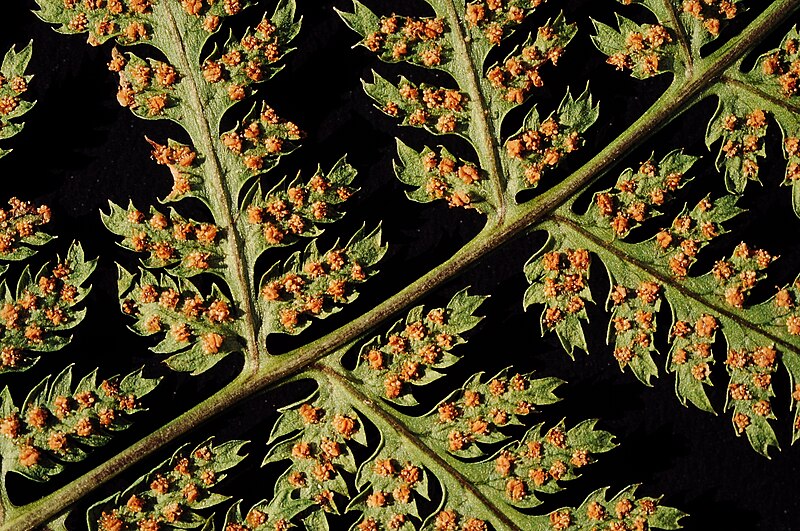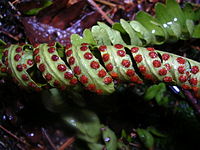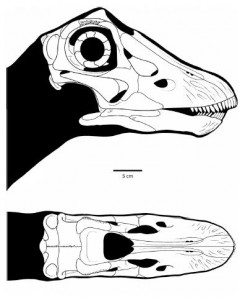Upon looking at the panoply of angiosperm dietary choices exploited by herbivores it is readily observed that the fruit, seeds, nuts and reproductive propagules are highly sought after food items. Among small herbivorous mammals such as rodents or primates these parts of the plant form a predominant part of the plant. But when we look at the choices in the Mesozoic, especially when angiosperms were rare or non-existent, you don't see a whole lot of options of comparable value in terms of calories, proteins, fats etc etc. Sure you got your podocarp fruits and maybe pine nuts of various conifers were exploited. Strange cycad fruits were maybe an option, but maybe not if they were too astringent or poisonous as many are now. But ferns- the plants seemingly most in reach for baby dinos and ubiquitous through many Mesozoic ecosystems seem bereft of any possible nutritive benefits for a fast growing baby dino, save the delicate fiddleheads- producing no seeds, cones, fruits or other obvious tasty bits. Were ferns simply ignored?
 |
| Sori. Dryopteris. wiki |
A closer look at ferns shows they offer some tasty and nutritious benefits. If you look at the underside of fern fronds (abaxial) you may spot clusters of sporangia also known in ferns as sori. These are the
 |
| Sori on fern. wikipedia |
reproductive organelles of ferns. They shed onto the ground or into the air column, hopefully growing into a gametophyte and completing the weird alternation of generation life cycle characteristic of these plants culminating in spore producing sporophyte. But what is of interest to me, and what was of interest to those hungry growing baby dinos I suggest, is that the sporangia or sori is loaded with lipids, proteins and calories. Great dino baby food in other words. Indeed wikipedia lists several animals that routinely exploit this food source including the European woodmouse (Apodemus sylvaticus), bullfinch (Pyrrhula marina), and the New Zealand lesser short tailed bat (Mystacina tuberculata). What all these critters have in common is that they are small, they are warm, and they represent animals that generally go after high quality food stuffs. If sori are good enough food for these critters to live on, I would venture to say that fern spore is rich enough for baby dinos to eat and even grow on. The trick is how to, shall we say, separate the wheat from the chaff.
If we look at sauropod tooth structure, especially the diplodocines, the teeth form a loose rake at the front of the jaw. Much as branch stripping has been posited as a feeding method in these dinosaurs, immatures need simply take the fern frond in their mouth, pull back, and rake in the easily shed sori. If you are a growing sauropod find yourself a nice field of tree ferns bursting with spores, hunker down and feed on this rich food source all day.
 |
| Diploducus skull. wiki |
And for the beaked ornithischian dinos the method is much the same. Put frond in mouth, pull back gently allowing the nutritious sori to separate from the fern against your beak, swallow and repeat.
Of course sporangia were not the only food growing baby dinos exploited- but I believe they would have at least seasonally been a reliable protein, calorie, and lipid rich resource in what at first glance appears an impoverished flora. I would even go so far as to say that fern spore may have regularly been exploited by various adult dinosaurs. Look at the strange skull of stegosaurus. Ii is a bit of an anomaly when compared to large herbivorous mammals. It is delicate, had a weak bite and looks like a particularly choosy feeder. You just don't see that pattern of choosy feeding among extant megaherbivores. Maybe stegosaurus was a little off a bit compared to modern large herbivores and the rich diet of fern spore allowed it to live this seemingly anomalous lifestyle for a megaherbivore.
Cheers!!!!
 |
| Juvie Diplo. Whitlock. 2010 |
Support me on Patreon.
Like antediluvian salad on facebook.
Watch me on Deviantart @NashD1.Subscribe to my youtube channel Duane Nash.
My other blog southlandbeaver.blogspot.
2 comments:
Really good point. Since ferns tend to have interesting carcinogens and enzymes such as thiaminase (as I recall), is there any information on how toxic sori and spores are?
Two other food sources worth investigating are cambium and juicing the stems of plants like Equisetum. Pine bark cambium has been regularly used as a human food in places like California and north Korea. I haven't a clue about the nutritive value of non-pine conifer bark, but it's certainly something that can be determined.
Even animals that can't digest grass can chew them stems and get some nutrients. While I have little desire to chew on Equisetum, I wonder what can be extracted from mashing the stems up?
Oh, and don't forget about rotten wood and dinosaur food. Hadrosaur droppings seem to contain it....
Yeah I really have not looked to far into the literature on sori toxins etc- it seems little explored. I just kind of stumbled on the references on wiki about various rodents, bats etc exploiting it and thought why not baby dinos? From what I gather so far the gametophyte phase is the less toxic phase than the sporophyte phase but I need to look further.
I have explored a little bit on tapping into the cambium for sap/phloem etc etc for food, I don't think sauropods necessarily went after it but I think robust beaked ceratopsids and hadrosaurids may have knawed into bark. I think beaked dinos in general may have chewed up a lot of stuff just the way rodents with their ever growing incisor do today. I do recall reading somewhere about the bark consuming Indians, but they were an eastern population from what I recall, maybe it was a very widespread diet for humans? Certainly an area worth exploring.
I believe the hadrosaur dropping indicating rotten wood consumption is the Chin paper you are talking about and I do intend to go into that one day- I have been toying around with the idea that some dinos may have acted like giant mobile compost bins- eating up detritus, rotten wood, fungi, carrion, rotten eggs, dung and other tasty tid-bits but I will get there in time.
thanks for useful comments
Post a Comment